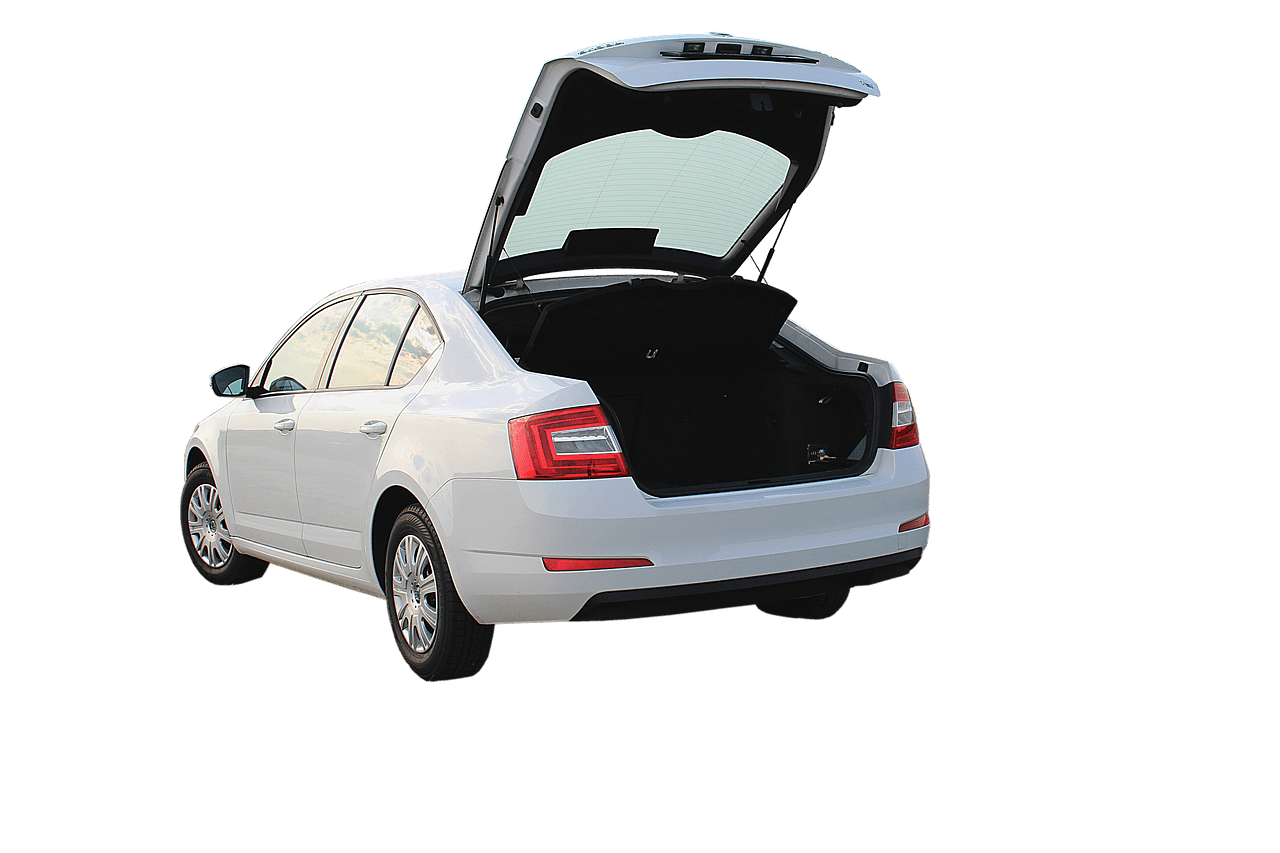![15 Safest Cities for Drivers in America [2023 Study]](https://www.quoteyeti.com/wp-content/uploads/2023/02/8782c09e-b747-4cd2-b858-707a178e1b53.png)
As more Americans take to the road, the question of safety while driving has become increasingly important. With the National Highway Traffic Safety Administration (NHTSA) reporting over 36,000 deaths in car accidents annually, it’s clear that the risk of driving is ever-present. Fortunately, some cities have taken significant steps to reduce this risk and have been successful in creating a safer driving environment for their residents.
Key Takeaways
- Cary, North Carolina, is the safest city to drive in America based on our research, with low crime rates and relatively few fatal car accidents.
- The cities that made it to the top 15 list have demonstrated a commitment to promoting safe driving through various measures, such as strict traffic laws, well-maintained roads, and proactive community education efforts.
- No city is completely free of risk when it comes to driving, and drivers should always exercise caution and follow traffic laws to minimize their chances of getting into an accident.
- Traffic congestion can play a role in accidents, and it’s important for cities to implement measures to alleviate congestion and improve the flow of traffic.
- By identifying the safest cities to drive in America, we hope to raise awareness about the importance of safe driving practices and encourage cities across the country to adopt similar measures to make driving safer for everyone
Safest Cities To Drive In America
In this article, we’ll be examining the safest cities to drive in America. We’ll be taking a closer look at the data on traffic accidents and crime rates in each city to determine which ones are the safest for drivers. In addition, we’ll explore the measures that these cities have taken to improve their road safety, and how these efforts have impacted the driving experience for residents.
By identifying the safest cities to drive in America, we hope to raise awareness about the importance of safe driving practices and encourage cities across the country to adopt similar measures to make driving safer for everyone. So buckle up, and join us as we take a closer look at the cities leading the way in road safety.
Driving is a necessity for many people in America, whether it’s for commuting to work or running errands. But with so many vehicles on the road, it’s important to consider safety when it comes to driving. Some cities are safer than others, and factors such as traffic, road conditions, and crime rates can all play a role in determining which cities are the safest for drivers.
To find the safest cities to drive in America, we looked at data from the National Highway Traffic Safety Administration (NHTSA), the Federal Bureau of Investigation (FBI), and other sources. We also considered factors such as traffic congestion, population density, and the number of fatal car accidents per capita.
Based on our research, here are the top 15 safest cities to drive in America:
Cary, North Carolina
Cary is a suburb of Raleigh and has a population of around 170,000. It has a low crime rate, with only 1.5 violent crimes per 1,000 people and 16.6 property crimes per 1,000 people. It also has a relatively low number of fatal car accidents, with just 4.8 deaths per 100,000 people.
Boise, Idaho
Boise is the largest city in Idaho and has a population of over 230,000. It has a low crime rate, with only 2.2 violent crimes per 1,000 people and 27.6 property crimes per 1,000 people. It also has a low number of fatal car accidents, with just 6.3 deaths per 100,000 people.
Naperville, Illinois
Naperville is a suburb of Chicago and has a population of around 150,000. It has a low crime rate, with only 0.5 violent crimes per 1,000 people and 13.8 property crimes per 1,000 people. It also has a low number of fatal car accidents, with just 2.9 deaths per 100,000 people.
Frisco, Texas
Frisco is a suburb of Dallas and has a population of around 180,000. It has a low crime rate, with only 1.7 violent crimes per 1,000 people and 14.9 property crimes per 1,000 people. It also has a relatively low number of fatal car accidents, with just 5.7 deaths per 100,000 people.
Irvine, California
Irvine is a city in Orange County, California, and has a population of over 280,000. It has a low crime rate, with only 0.7 violent crimes per 1,000 people and 13.4 property crimes per 1,000 people. It also has a relatively low number of fatal car accidents, with just 4.7 deaths per 100,000 people.
Gilbert, Arizona
Gilbert is a suburb of Phoenix and has a population of around 250,000. It has a low crime rate, with only 0.7 violent crimes per 1,000 people and 13.5 property crimes per 1,000 people. It also has a relatively low number of fatal car accidents, with just 4.7 deaths per 100,000 people.
McKinney, Texas
McKinney is a suburb of Dallas and has a population of around 200,000. It has a low crime rate, with only 1.2 violent crimes per 1,000 people and 15.5 property crimes per 1,000 people. It also has a low number of fatal car accidents, with just 5.4 deaths per 100,000 people.
Thousand Oaks, California
Thousand Oaks is a city in Ventura County, California, and has a population of around 130,000. It has a low crime rate, with only 0.7 violent crimes per 1,000 people and 13.5 property crimes per 1,000 people. It also has a relatively low number of fatal car accidents, with just 3.6 deaths per 100,000 people.
Olathe, Kansas
Olathe is a city in Johnson County, Kansas, and has a population of around 140,000. It has a low crime rate, with only 1.1 violent crimes per 1,000 people and 14.5 property crimes per 1,000 people. It also has a relatively low number of fatal car accidents, with just 3.6 deaths per 100,000 people.
Sterling Heights, Michigan
Sterling Heights is a city in Macomb County, Michigan, and has a population of around 130,000. It has a low crime rate, with only 1.3 violent crimes per 1,000 people and 14.8 property crimes per 1,000 people. It also has a relatively low number of fatal car accidents, with just 5.2 deaths per 100,000 people.
Overland Park, Kansas
Overland Park is a city in Johnson County, Kansas, and has a population of around 200,000. It has a low crime rate, with only 1.0 violent crimes per 1,000 people and 16.3 property crimes per 1,000 people. It also has a low number of fatal car accidents, with just 3.3 deaths per 100,000 people.
Sunnyvale, California
Sunnyvale is a city in Santa Clara County, California, and has a population of around 150,000. It has a low crime rate, with only 1.7 violent crimes per 1,000 people and 22.5 property crimes per 1,000 people. It also has a relatively low number of fatal car accidents, with just 4.7 deaths per 100,000 people.
Peoria, Arizona
Peoria is a city in Maricopa County, Arizona, and has a population of around 170,000. It has a low crime rate, with only 1.3 violent crimes per 1,000 people and 17.2 property crimes per 1,000 people. It also has a relatively low number of fatal car accidents, with just 4.4 deaths per 100,000 people.
Allen, Texas
Allen is a suburb of Dallas and has a population of around 105,000. It has a low crime rate, with only 0.7 violent crimes per 1,000 people and 15.9 property crimes per 1,000 people. It also has a relatively low number of fatal car accidents, with just 3.7 deaths per 100,000 people.
Arvada, Colorado
Arvada is a city in Jefferson County, Colorado, and has a population of around 120,000. It has a low crime rate, with only 1.6 violent crimes per 1,000 people and 21.4 property crimes per 1,000 people. It also has a relatively low number of fatal car accidents, with just 4.4 deaths per 100,000 people.
Safest Cities To Drive In America – Data
Ready to get started?
We’ve got you covered.
Driver Safety in America
In conclusion, the data is clear: when it comes to driving, some cities are simply safer than others. The top 15 cities on our list have demonstrated a strong commitment to promoting safe driving through various measures, including strict traffic laws, well-maintained roads, and proactive community education efforts. As a result, drivers in these cities can enjoy a relatively low risk of accidents and crime when they hit the road.
But while it’s certainly encouraging to see cities taking steps to promote safe driving, it’s important to remember that no city is completely free of risk. Even the safest cities can still see accidents and other incidents on their roads, and it’s up to drivers to do their part to minimize those risks by practicing safe driving habits and following traffic laws.
Moreover, it’s important for drivers in all cities to stay aware of the risks and challenges that come with driving. Whether it’s heavy traffic, adverse weather conditions, or other factors, drivers need to be prepared to navigate these challenges with caution and skill.
By working together – drivers, cities, and organizations – we can continue to improve the safety of our roads and make driving a more enjoyable and less risky experience for everyone. So let’s take the data and statistics we’ve seen in these articles as a starting point, and continue to push for greater safety on America’s roads. By doing so, we can make our communities safer and more vibrant places to live, work, and explore.
Expert Insights on Driver Safety
“Distracted driving is a leading cause of accidents on our roads, and it’s something that everyone needs to take seriously. Whether it’s texting, talking on the phone, or simply not paying attention to the road, distractions can be deadly.” – Robert Sinclair, Jr., spokesperson for AAA Northeast.
“Many people believe that they are safer drivers than they actually are, and this overconfidence can lead to risky behaviors and dangerous situations. It’s important for drivers to take a critical look at their own driving habits and identify areas where they can improve.” – David Zuby, Executive Vice President and Chief Research Officer at the Insurance Institute for Highway Safety.
“Driving under the influence is a serious problem, and it’s one that affects not only the driver but everyone else on the road. We need to do more to raise awareness about the dangers of drunk driving and encourage people to make responsible decisions when they get behind the wheel.” – Colleen Sheehey-Church, National President of Mothers Against Drunk Driving.
“Teenagers are among the most at-risk groups on the road, and it’s up to parents and caregivers to help them develop safe driving habits. This means setting a good example, enforcing rules around cell phone use and other distractions, and making sure that young drivers get the training and experience they need to navigate our roads safely.” – Pam Fischer, Senior Director of External Engagement for the Governors Highway Safety Association
“One of the biggest challenges we face when it comes to driver safety is complacency. It’s easy to get comfortable behind the wheel and start taking risks or letting our guard down, but this can be a recipe for disaster. We need to stay vigilant and stay focused on the road, even when we’re driving familiar routes or feeling comfortable in our cars.” – Adrian Lund, President of the Insurance Institute for Highway Safety.
Driver Safety Statistics
- In 2019, there were 36,096 deaths in motor vehicle crashes in the United States. (National Highway Traffic Safety Administration, NHTSA)
- Speeding was a factor in 9,478 fatalities in 2019, accounting for 26% of all traffic fatalities. (NHTSA)
- In 2019, 3,142 people were killed in distracted driving crashes. (NHTSA)
- In 2019, 10,142 people were killed in alcohol-impaired driving crashes, accounting for 28% of all traffic fatalities. (NHTSA)
- In 2019, there were 846 bicyclist deaths and 6,205 pedestrian deaths in traffic crashes. (NHTSA)
- Motor vehicle crashes are the leading cause of death for teenagers in the United States. (Centers for Disease Control and Prevention, CDC)
- 52% of teenagers killed in car crashes were not wearing a seat belt at the time of the crash. (CDC)
- Drivers under the age of 20 have the highest proportion of distraction-related fatal crashes. (NHTSA)
- Rural areas have higher fatality rates per capita than urban areas, due in part to longer emergency response times and the lack of trauma centers. (NHTSA)
- In 2019, 5,005 motorcyclists were killed in traffic crashes. (NHTSA)
- In 2019, 28% of all traffic fatalities were caused by crashes involving large trucks. (NHTSA)
- In 2019, 846 people were killed in crashes involving large trucks. (NHTSA)
- Fatigue is a contributing factor in an estimated 91,000 police-reported crashes each year. (National Sleep Foundation)
- Drowsy driving is responsible for an estimated 1,550 fatalities and 71,000 injuries each year. (NHTSA)
- In 2019, 4,761 motor vehicle occupants were killed in crashes where they weren’t wearing a seat belt. (NHTSA)
- From 2014 to 2018, there were 791 fatalities in crashes involving school transportation vehicles. (NHTSA)
- In 2019, there were 846 bicyclist deaths and 6,205 pedestrian deaths in traffic crashes. (NHTSA)
- In 2019, 22% of passenger vehicle occupants killed in crashes were not wearing seat belts. (NHTSA)
- In 2019, 634 children 12 years old and younger died in motor vehicle crashes. (NHTSA)
- Nearly one in three fatal crashes in the United States involve a drunk driver. (Mothers Against Drunk Driving)
- In 2019, there were 2,841 fatal crashes involving large trucks. (Federal Motor Carrier Safety Administration)
- In 2019, 10,142 people were killed in alcohol-impaired driving crashes, accounting for 28% of all traffic fatalities. (NHTSA)
- Drivers using hand-held cell phones are 4 times more likely to get into a crash serious enough to cause injury. (Insurance Institute for Highway Safety)
- In 2019, there were 846 bicyclist deaths and 6,205 pedestrian deaths in traffic crashes. (NHTSA)
- In 2019, 46% of all motor vehicle crash deaths occurred in single-vehicle crashes. (NHTSA)
- According to data from the National Center for Statistics and Analysis (NCSA) Motor Vehicle Traffic Crash Data Resource Page, the number of fatalities in motor vehicle traffic crashes decreased significantly from 2022 to 2023, with a 5.6% decrease in fatal crashes.
- Over the same period, DUI-related fatalities decreased by 6.7%, while the number of crashes involving teens decreased by 11.5%, and the number of crashes involving commercial drivers decreased by 12.1%.
These statistics underscore the importance of driver safety and the need for ongoing efforts to reduce the risk of accidents on our roads. Whether through improved infrastructure, more effective law enforcement, or better driver education and awareness programs, there is always more that we can do to promote safe driving practices and protect the lives of everyone on the road. By staying informed and taking responsibility for our own driving habits, we can all play a part in creating safer and more livable communities for everyone.
Research Sources
- National Highway Traffic Safety Administration (NHTSA): https://www.nhtsa.gov/
- Federal Bureau of Investigation (FBI): https://www.fbi.gov/
- Traffic congestion data from INRIX Global Traffic Scorecard: https://inrix.com/scorecard/
- City crime data from the FBI Uniform Crime Reporting (UCR) Program: https://ucr.fbi.gov/
- Fatal car accident data from the Insurance Institute for Highway Safety (IIHS): https://www.iihs.org/topics/fatality-statistics/detail/state-by-state
- National Highway Traffic Safety Administration (NHTSA): https://www.nhtsa.gov/
- Centers for Disease Control and Prevention (CDC): https://www.cdc.gov/
- National Sleep Foundation: https://www.sleepfoundation.org/
- Mothers Against Drunk Driving: https://www.madd.org/
- Federal Motor Carrier Safety Administration: https://www.fmcsa.dot.gov/
- Insurance Institute for Highway Safety: https://www.iihs.org/
- CrashStats – NHTSA – DOT
- DrivingTests.org – The Ultimate List of Driving Statistics for 2023
- Fatality Analysis Reporting System (FARS)- NHTSA











